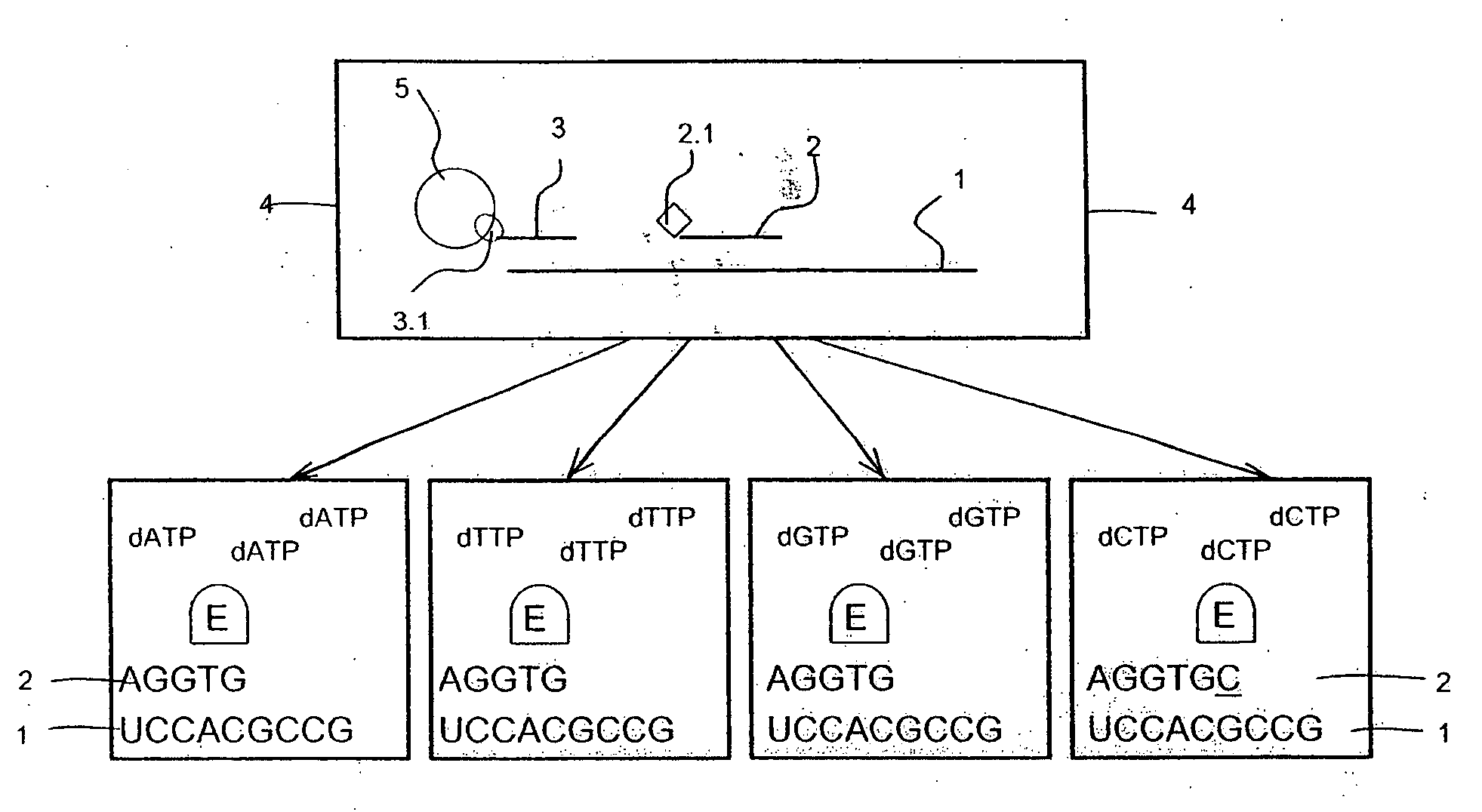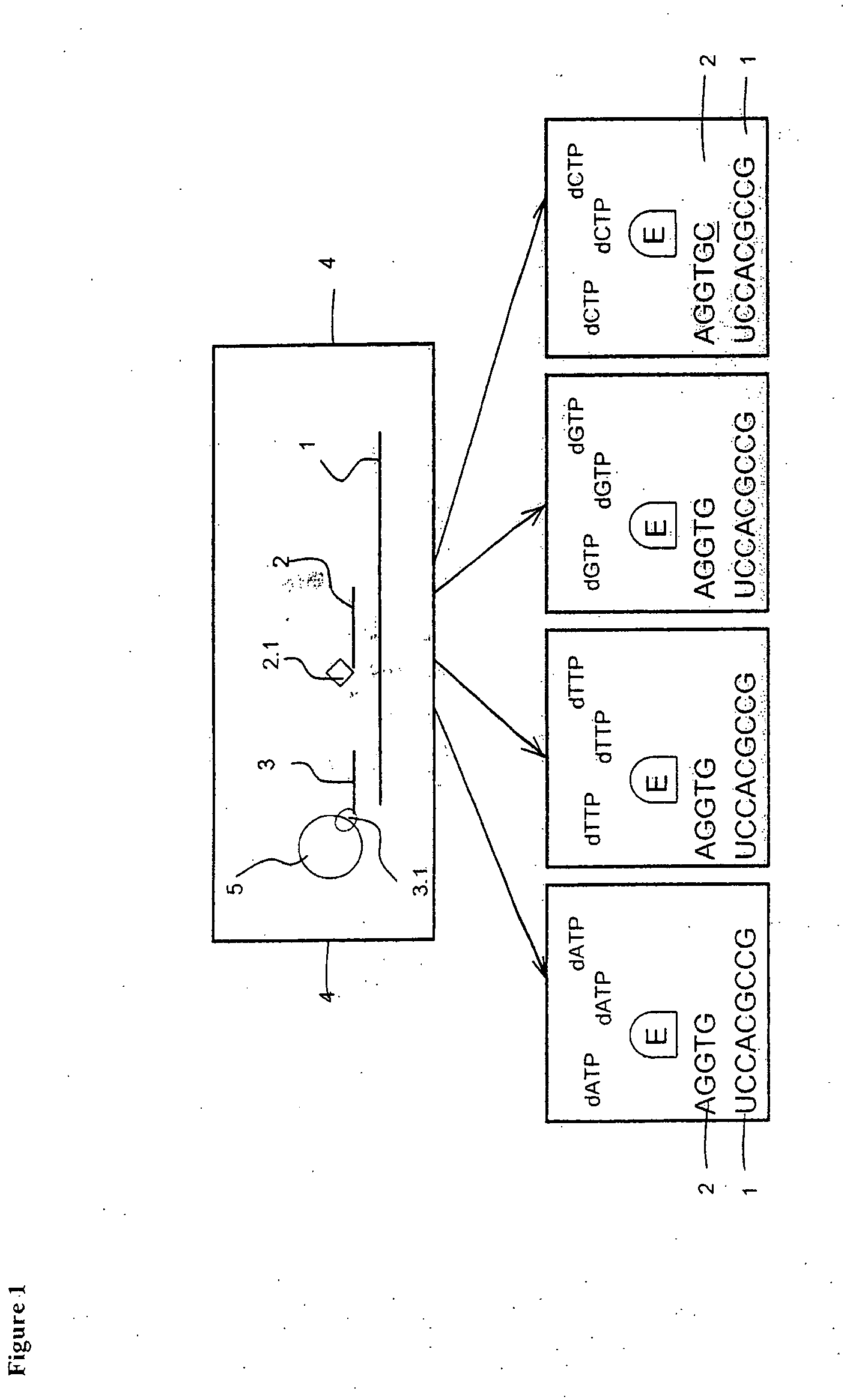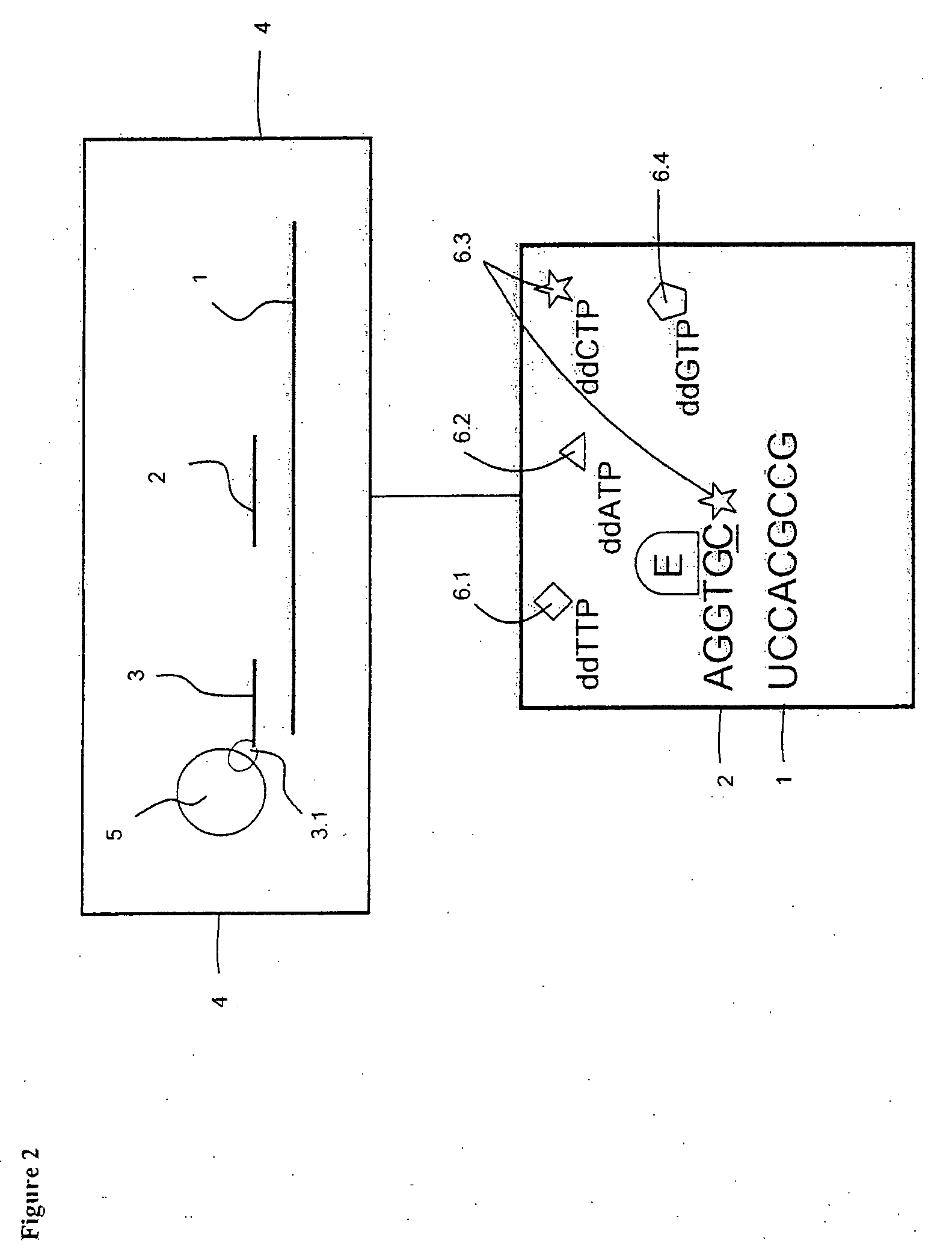Method and test kit for detecting nucleotide variations
a nucleotide variation and test kit technology, applied in combinational chemistry, biochemistry apparatus and processes, library member identification, etc., can solve the problems of inability to compare results with sufficient accuracy to obtain quantitative results, methods that do not describe how to quantify nucleotide variations, and none of the methods mentioned above enable simultaneous analysis and determination
- Summary
- Abstract
- Description
- Claims
- Application Information
AI Technical Summary
Benefits of technology
Problems solved by technology
Method used
Image
Examples
example 1
Identification of Single Nucleotides in Expressed RNAs
[0095]The example demonstrates a quantitative determination of three mRNA target molecules from crude lysates of colon cancer cell line COLO205 with simultaneous identification of one or more nucleotides following each of the target-detector probe-hybrids. Two of the mRNA target molecules were human genes PRSS1 coding for serine protease and GAPDH coding for glyceraldehyde-3-phosphate dehydrogenase. The third mRNA target was an in vitro transcribed Escherichia coli traT gene that was used as a positive control.
1. Preparative Steps
Preparing Probe Pools
[0096]Probe sequences were designed for two known human genes present in the used colon cancer cell line
PRSS1 protease, serine, 1 (trypsin 1), NM—002769.2 and
GAPDH glyceraldehyde-3-phosphate dehydrogenase NM—002046.3.
A control probe identifying the E. coli traT RNA sequence was designed.
[0097]The probe sequences were designed by a computer program with the following criteria: Probe l...
example 2
Identification of Nucleotide Variations in a Single Reaction Vessel
[0105]The preparation of targets and probes are as described in Example 1, but the sample containing one or more target polynucleotide sequences which have been affinity-tagged, hybridized, captured on a solid support and washed are transferred to a reverse transcriptase-containing buffer solution, which further comprises all of the components ddATP, ddTTP, ddCTP and ddGTP each labeled with a distinct tracer tag (FIG. 2). Depending on the free nucleotide following directly after the 3′-terminal end of the probes on the 5′-terminal end of the target, said reverse transcriptase elongates one or more of the probes with one nucleotide in said solution. When a ddNTP is incorporated, the extension reaction stops because a ddNTP contains a H-atom on the 3rd carbon atom (dNTPs contain a OH-atom on that position). In this case the probe complementary to polynucleotide sequence used in the hybridisation is not necessarily trac...
example 3
Use of the Method to Quantify Expression of Cystic Fibrosis Transmembrane Regulator Gene (CFTR) and Identification of Cystic Fibrosis (CF) Causing Single Nucleotide Polymorphisms (SNPs) Therein
[0106]Cystic fibrosis (CF) is a common lethal genetic disorder, which is inherited in an autosomal recessive manner. Individuals who have a homozygote or compound heterozygote of the pathogenic CFTR mutations suffer from CF, the disease phenotype of CF varies from severe to mild pulmonary diseases with varying degree of pancreatic insufficiency (Lee et al., Mutation research (2005), 573, 195-204). Currently, more than 1000 mutations of CFTR have been registered. Several mutations of the CFTR gene, such as F508del (most common), 394delTT, G542X, N1303 are associated with the severe CF phenotypes and display a high disease penetrance.
[0107]Using the method described in the present invention, we are going to measure the allele specific expression of CFTR gene in samples collected e.g. from differ...
PUM
| Property | Measurement | Unit |
|---|---|---|
| Size | aaaaa | aaaaa |
| Ratio | aaaaa | aaaaa |
| Fluorescence | aaaaa | aaaaa |
Abstract
Description
Claims
Application Information
 Login to View More
Login to View More - R&D
- Intellectual Property
- Life Sciences
- Materials
- Tech Scout
- Unparalleled Data Quality
- Higher Quality Content
- 60% Fewer Hallucinations
Browse by: Latest US Patents, China's latest patents, Technical Efficacy Thesaurus, Application Domain, Technology Topic, Popular Technical Reports.
© 2025 PatSnap. All rights reserved.Legal|Privacy policy|Modern Slavery Act Transparency Statement|Sitemap|About US| Contact US: help@patsnap.com



